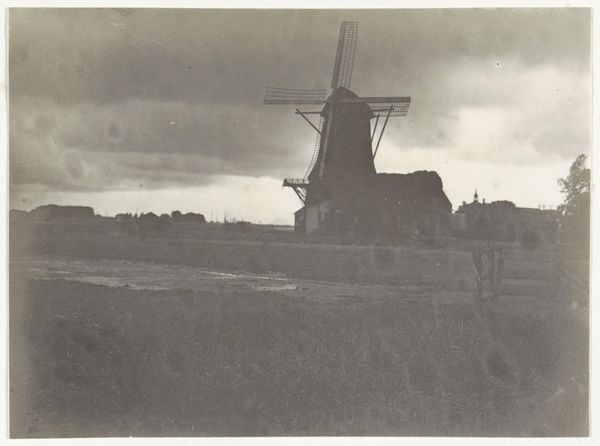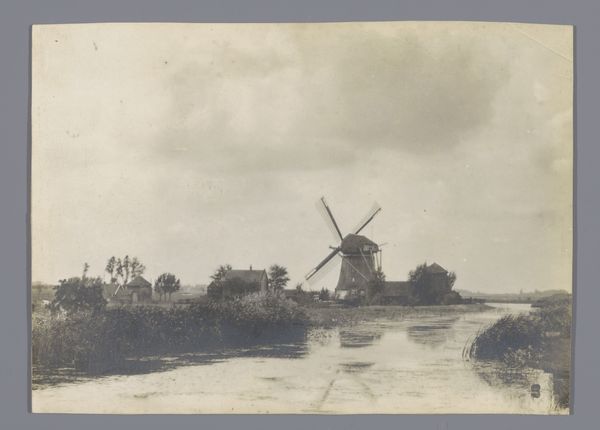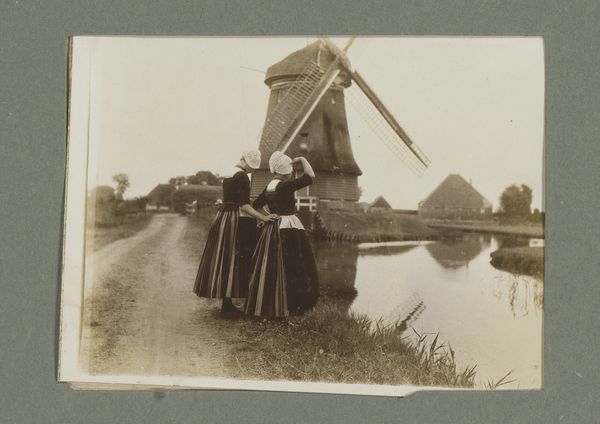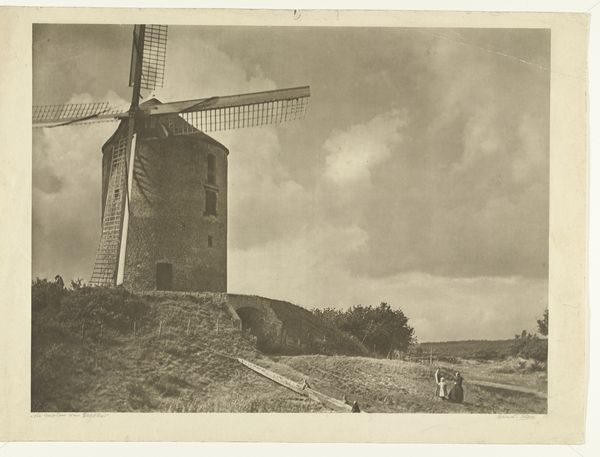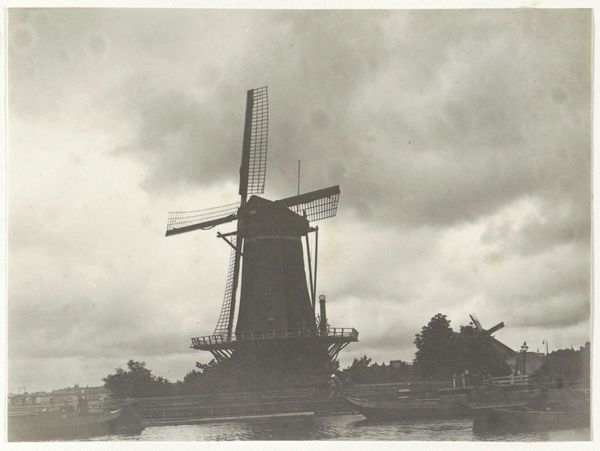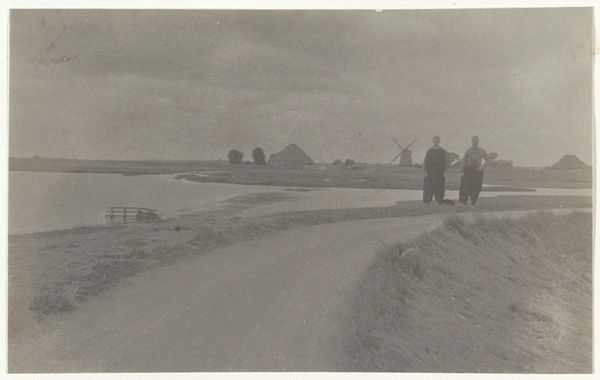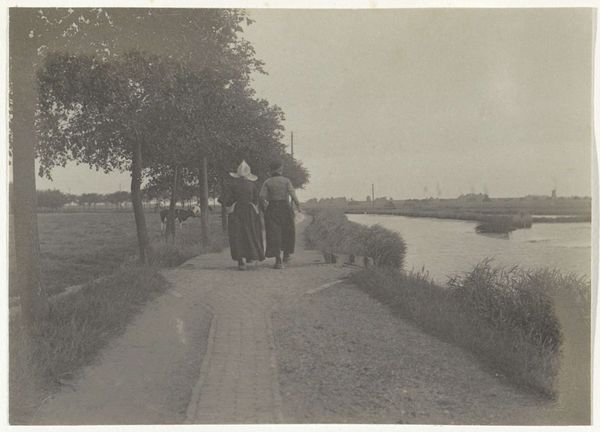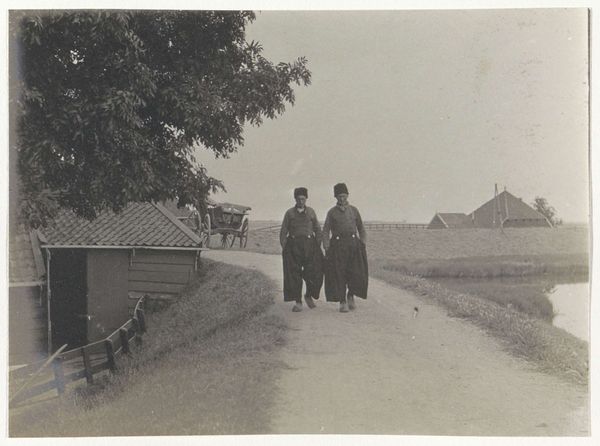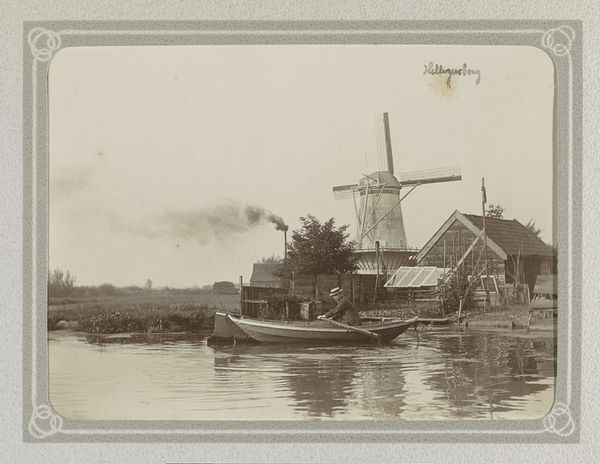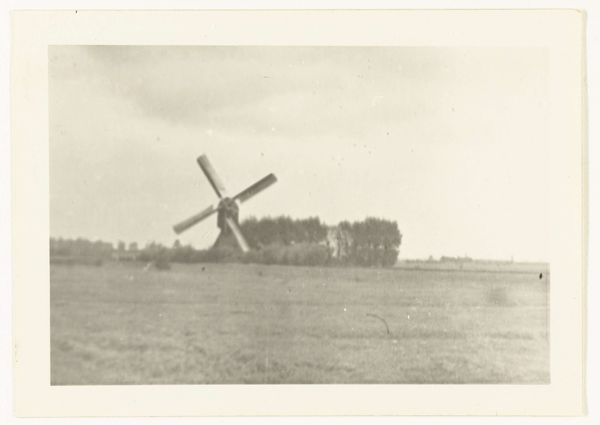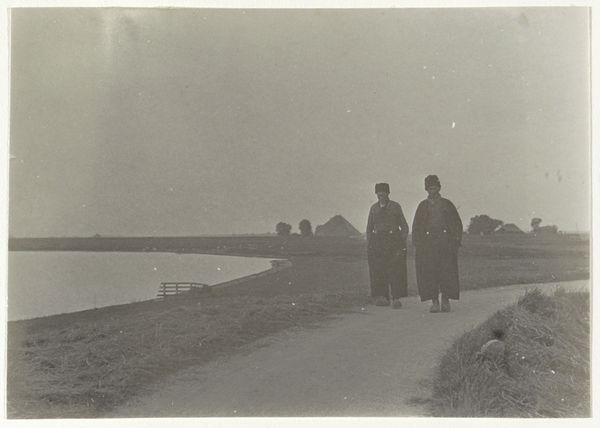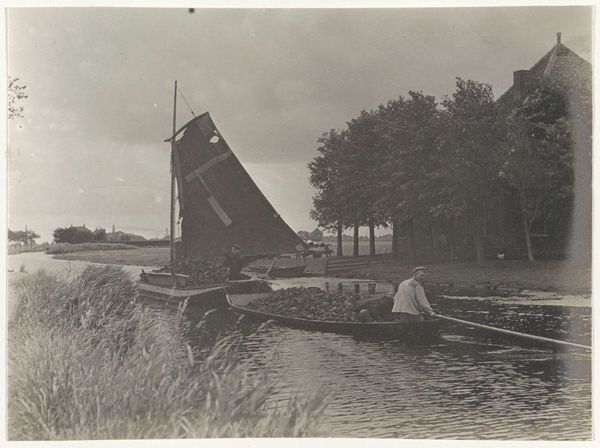
Twee mannen in Volendamse klederdracht staand bij een sloot met op de achtergrond een molen c. 1900 - 1910
0:00
0:00
photography, gelatin-silver-print
#
portrait
#
dutch-golden-age
#
landscape
#
outdoor photograph
#
outdoor photo
#
archive photography
#
photography
#
historical photography
#
gelatin-silver-print
#
monochrome photography
#
realism
#
monochrome
Dimensions: height 67 mm, width 97 mm
Copyright: Rijks Museum: Open Domain
Editor: Here we have a gelatin silver print dating from around 1900-1910, titled "Two Men in Volendam Costume Standing by a Ditch with a Windmill in the Background." It's a pretty classic Dutch scene, wouldn’t you say? Very serene…almost staged, in a way. What stands out to you about this piece? Curator: It's fascinating how photographs like this participated in constructing and reinforcing national identity. The carefully chosen 'traditional' costumes and the quintessential Dutch landscape – the windmill, the flat land – project a very specific image. Do you think it represents authentic rural life or a romanticized ideal meant for consumption? Editor: Hmm, that’s a great question. I mean, it feels very… deliberate. Like a postcard. Maybe it's both? What was the purpose of such images at the turn of the century? Curator: Photographs like these became incredibly popular, fueling tourism and solidifying a visual vocabulary of "Dutchness." Think about it: these images circulated widely, creating a shared visual understanding, both domestically and internationally. But it also risks essentializing a complex culture into simple, easily digestible images. Is that limiting, do you think? Editor: I see what you mean. It's like freezing a culture in a specific time and place. Does it bother you, as a historian? Curator: As a historian, it compels me to unpack the layers of meaning. These aren't simply neutral depictions, they're carefully crafted narratives with socio-political implications. Examining them critically helps us understand how national identity is constructed and perpetuated. Think about how social media continues this trend today… Editor: That makes so much sense! I hadn’t considered the photograph as a cultural tool shaping perceptions like that. Curator: Indeed. So next time, let’s dig into this photographic strategy in our contemporary landscape. Editor: I am now excited about landscape! Thanks for this insight.
Comments
No comments
Be the first to comment and join the conversation on the ultimate creative platform.
